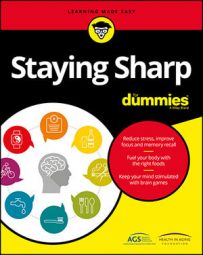Unfortunately, too much of what's taught in school is still based on rote learning. Your job is to deepen the meaning of what you learn and put it in context so that you can remember it later.
To have knowledge means that you understand the meaning of facts, how they're organized, and how they fit into what you already know about a particular subject area. Because the meaningfulness of information determines how well you remember it, rote memorization isn't exactly the best method of learning. (Maybe schools will someday realize this truth, too.) An example of rote learning would be to try to memorize the list of presidents in the preceding section without any association or memory cues.
When you try to remember the list by factoring in meaning, you may consider, for example, that George Washington was the principal general who helped the colonies gain independence from England. In addition, the three presidents to follow were major contributors to the Declaration of Independence and the Constitution.
How well the information that you're trying to remember is organized has a lot to do with the degree of its meaningfulness. So, the more meaningful the information is, the more likely you are to remember it.
Having some interest in the subject matter that you're trying to commit to memory is helpful. This interest forms part of the meaning that you can attach to the information to help you remember it.
For example, many people complain that they have little interest in mathematics, yet they're required to learn it nevertheless. You may say, "I'm no good at math." Your lack of interest or your self-paralyzing fear of math creates a self-fulfilling prophecy — you don't retain what you learn.
If you're trying to remember something, you can always think around it. For example, suppose you're trying to remember who was the second president of the United States after Abraham Lincoln; Johnson succeeded him, but who came next? If you think around the question, perhaps you'll touch on Reconstruction and then move back to Lincoln. Perhaps you'll move back to the Civil War and then to the surrender at Appomattox. You begin to wonder which two generals were present. Robert E. Lee for the South, of course, and Ulysses S. Grant for the North. Hey, wasn't Grant later elected president?
This chain of associations is like a series of links that you click as you surf the Internet. As you read about the Civil War on one page, you click on the blue hypertext word Appomattox. Then at that page, you click on word generals. These links are associations. They each focus on one topic, but they link and relate to similar topics and give you a broader knowledge base.
